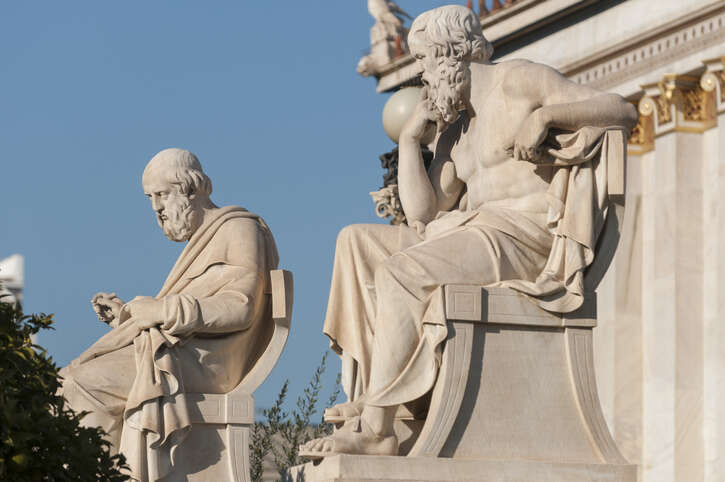
We live in challenging times. A quick glance at the stark electoral maps across Europe and North America makes all too apparent those things that divide us. Urban versus rural, cosmopolitan versus nativist: The Atlantic world is torn apart. At a time like this, it is tempting to dive into the comfortable world of food and wine, to retreat into our own small luxuries as apolitical balm for our troubles. It is a temptation, but it is a chimera. In a world where “winning” is everything, the taste of success—the meaning of luxury itself—is the arena for one of the most bitter contests in this new culture war. For those of us who care passionately about what we eat and drink, this crisis offers us a great opportunity; we might not be able to fall back to our cellars to wait out the crisis, but we can at least mobilize the power of conviviality to try and solve our problems.
So, what is luxury? Within the restaurant world, there are now two competing visions that mirror our wider divides. On the one hand, we have “checklist luxury.” Luxury comes from what the experience contains. It is the luxury of perpetual filet mignon and lobster, where their important attribute is simply that they are surf and turf. This is an idea with a long history within Western culture. It is the land of Cockaigne, the libidinous medieval land of plenty, and it applies much more widely, too. Most notably, it has considerable appeal for the developers of high-end hotel chains; it is the power of a jumble of gold-embossed luxury signifiers held together in a disco Versailles aesthetic, the world where brand trumps all else. If we were to think of it in terms of wine, it would taste oaky and perhaps a little sweet.
Cast against this we have the “luxury of expertise.” Here it is not the filet mignonness of the food that conveys its luxury, but rather the manner of its growth and preparation. In London, New York, or Copenhagen dropping several hundred dollars a head on dinner will quite likely yield a meal composed almost entirely of vegetables. It is the profound separation that has happened over the past 30 years between the mass-market luxury of premium air travel and hotel chains and the chefas- auteur world of the gastronomic restaurant. Integrity of agriculture and uniqueness are the key concepts; in place of a checklist of simple attributes, we are instead invited to taste a full narrative of the dish and its ingredients from their inception. This is a cuisine of knowing about stuff. The same would be true of our wine selection. At worst, this could descend into an exercise in esotericism for its own sake, but at best we will be presented with a celebration of the diverse underappreciated.
Healing the divide
I have myself participated in the conflict between the two visions of luxury, if only by inflicting odd fermented food and unpronounceable things to drink upon the older generation at family gatherings where all they really want are prime rib and a glass of Cabernet Sauvignon. I am sure that my family members are eager to take back control and have had quite enough of experts, but bridging the divide at dinner is the first small step to addressing the same issues writ large across our society: How should one interact with a world where one’s identity—that prime rib and Cabernet— is no longer the center of the world?
The problem for checklist luxury is simple; over the course of the 20th century, it was caught up by technological change. In a world of synthetic fertilizers and sophisticated agriculture, animal protein—or ripeness in wine—that a century ago would have been luxurious simply for its scarcity is now cheap and readily available. As long as we are prepared to put aside our environmental foibles, we can all participate in a cuisine of abundance. And this is my greatest hope. The sheer ubiquity of previously luxurious ingredients means that they are losing their power, and those providers of mass-market luxury are scrambling to adapt. Where mass-market luxury goes, so too does the popular imagination. We can change what “winning” tastes like.
Here the technological revolutions of our own century can help. Suddenly it is possible for an organization like an airline to abandon the cookie-cutter model of luxury. Technology and training can democratize knowledge and bring it to the customer-service front line. Where before an airline relied on the same safe signifiers of quality and prestige, with a little attention to staff development it is possible to celebrate wines away from the mainstream. The work of JetBlue and the California wine list offered in its Mint Class is exemplary in this respect. The question mark against the luxury of expertise is always going to be that knowledge can too easily be used to exclude and to scold; broadening access to information has the opposite effect. Authentic personal interactions are the key. American chef Dan Barber speaks eloquently of the need for the food and environmental movements to consider themselves as “Merchants of Pleasure, not Armies of Virtue,” and with each interaction where we try something new and share in the passion of its creator, we have the opportunity to transcend our own small cultural and gastronomic bubbles. It is a long project, but we can heal the divide one meal at a time




